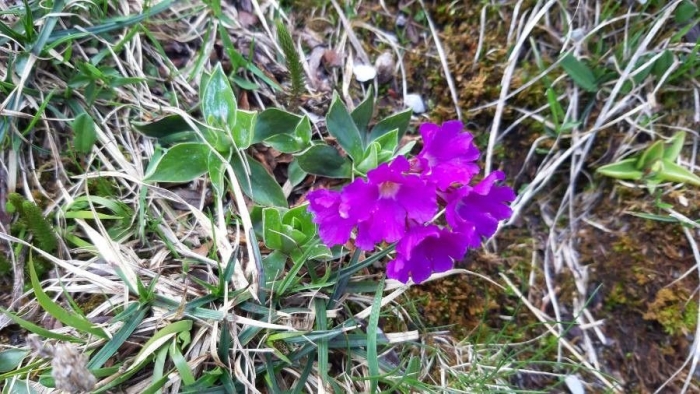Primrose
(Primula glaucescens)
Primrose (Primula glaucescens)
/
/

Sala Claudio
CC BY-SA 4.0
Image By:
Sala Claudio
Recorded By:
Copyright:
CC BY-SA 4.0
Copyright Notice:
Photo by: Sala Claudio | License Type: CC BY-SA 4.0 | License URL: https://creativecommons.org/licenses/by-sa/4.0/ | Attribution: Sala Claudio (cc-by-sa) | Rights Holder: Sala Claudio | Publisher: PlantNet | Date Created: 2019-06-16T12:32:40Z | Title: Primula glaucescens Moretti: flower | Notes: Prospero autumnale (L.) Speta: flower |









Estimated Native Range
Summary
Primula glaucescens, commonly known as Primrose, is an evergreen perennial herb native to the mountainous regions of northern Italy, particularly the Alps. It thrives in alpine meadows and rocky areas, where it is adapted to cool temperatures and well-draining soils. This species typically grows to a height and width of 1-2 feet (0.3-0.6 meters), forming a low-growing rosette of leaves. The leaves are glaucous, giving them a frosted appearance. Primula glaucescens produces clusters of bell-shaped flowers that are pink and purple, blooming profusely in the spring and early summer, adding a splash of color to the garden.
The Primrose is valued for its vibrant flowers and ability to brighten up shady areas in the garden. It is often used in rock gardens, alpine collections, and as an underplanting for taller shrubs. It prefers moist, humus-rich soil with good drainage and can tolerate cold temperatures well, making it suitable for cooler climates. While it does best in part shade, it can also tolerate full sun in cooler regions. Gardeners should be aware of potential issues with slugs and snails, which find Primrose particularly attractive.CC BY-SA 4.0
The Primrose is valued for its vibrant flowers and ability to brighten up shady areas in the garden. It is often used in rock gardens, alpine collections, and as an underplanting for taller shrubs. It prefers moist, humus-rich soil with good drainage and can tolerate cold temperatures well, making it suitable for cooler climates. While it does best in part shade, it can also tolerate full sun in cooler regions. Gardeners should be aware of potential issues with slugs and snails, which find Primrose particularly attractive.CC BY-SA 4.0
Plant Description
- Plant Type: Herb
- Height: 1-2 feet
- Width: 1-2 feet
- Growth Rate: Moderate
- Flower Color: Pink, Purple
- Flowering Season: Spring, Summer
- Leaf Retention: Evergreen
Growth Requirements
- Sun: Part Shade
- Water: Medium, High
- Drainage: Medium
Common Uses
Bee Garden, Bird Garden, Butterfly Garden, Deer Resistant, Hummingbird Garden, Low Maintenance, Rabbit Resistant, Showy Flowers
Natural Habitat
Mountainous regions of northern Italy, particularly the Alps
Other Names
Common Names: Meergrüne Primel, Íslenska
Scientific Names: , Primula glaucescens, Primula longobarda, Auriculaursii glaucescens,
GBIF Accepted Name: Primula glaucescens Moretti